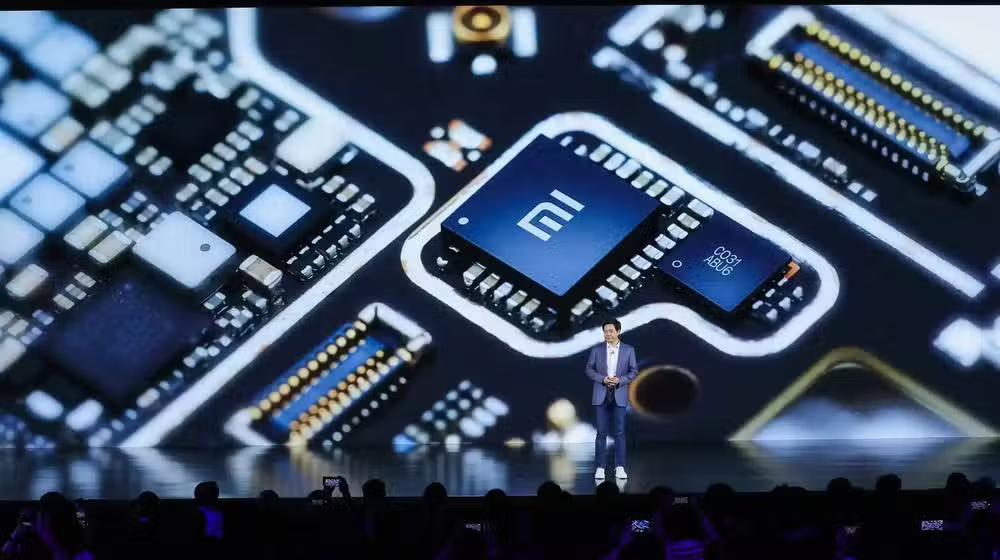Xiaomi has officially announced a major leap in its hardware ambitions with the upcoming launch of its first self-developed smartphone chipset, marking a pivotal moment in the brand’s journey toward technological independence. Revealed by CEO Lei Jun on Weibo, the new chip is called Xuanjie O1 in Chinese and will be marketed globally as the Xring O1.
This development signals Xiaomi’s growing focus on reducing its dependency on third-party chipset providers like Qualcomm and MediaTek, and achieving tighter control over its device performance, design, and innovation capabilities. The chip will be formally unveiled later this month.
What to Expect from the Xring O1 Chipset
Though Xiaomi has yet to release official specifications, trusted Chinese tech leaker Digital Chat Station has offered insights into the chip’s architecture. According to the leak, the Xring O1 will be built using an advanced 5nm manufacturing process, putting it on par with today’s flagship processors in terms of efficiency and speed.
The chip is rumored to feature an 8-core CPU layout with the following structure:
- 1 Cortex-X925 core, clocked up to 3.2GHz for peak performance
- 3 Cortex-A725 cores at up to 2.6GHz
- 4 Cortex-A520 cores for power-efficient background processing, at up to 2.0GHz
The graphics processor (GPU) is reportedly developed by Imagination Technologies, while the 5G modem included in the chip has been designed by Unisoc, another rapidly growing Chinese semiconductor company.
If early reports prove accurate, the Xring O1 could offer performance levels similar to Qualcomm’s Snapdragon 8 Gen 2, a notable feat for Xiaomi’s first proprietary chip.
A Strategic Shift Toward Vertical Integration
Xiaomi’s foray into custom chipset development is about more than just hardware performance. It’s a clear indication of the company’s long-term vision to become a vertically integrated tech powerhouse. By building its own processors, Xiaomi gains more control over software optimization, hardware integration, and long-term cost efficiencies.
This move is also a strategic hedge against geopolitical instability and growing restrictions on global tech trade. Amid ongoing trade tensions and supply chain uncertainties, especially between the U.S. and China, having in-house chipmaking capabilities could give Xiaomi greater security and operational flexibility.
Potential Debut Devices and Launch Timeline
Lei Jun has confirmed that the official launch of the Xring O1 chipset will take place later in May 2025, though the exact date remains undisclosed. Industry watchers speculate that the chip could debut in Xiaomi’s next flagship smartphone, possibly from the Xiaomi 15 series or the experimental MIX line.
There’s also speculation that over time, Xiaomi may extend the use of its in-house chips across its Redmi and Poco sub-brands, especially if it proves competitive in performance and cost-effectiveness.
Implications for the Xiaomi Ecosystem
Introducing its own chip gives Xiaomi the power to do far more than just compete on hardware. It can begin tailoring exclusive features, enhanced AI capabilities, and battery optimizations that are unique to Xiaomi devices, much like Apple has done with its A-series and M-series chips.
This level of control can enhance device efficiency, prolong software support cycles, and offer smoother cross-device integration across Xiaomi’s growing ecosystem of smartphones, tablets, wearables, smart TVs, and IoT devices.
The launch of the Xring O1 is a bold and strategic move by Xiaomi, aiming to break away from overdependence on traditional chipmakers and step into the league of tech companies designing their own custom silicon. While many companies have attempted this with limited success, Xiaomi’s scale, global presence, and commitment to R&D may give it an edge.
If the Xring O1 delivers on its rumored performance and efficiency, it could reshape Xiaomi’s position in the global smartphone market — not just as a manufacturer, but as a serious semiconductor innovator. The coming weeks will reveal whether this leap pays off, but one thing is clear: Xiaomi is ready to play a bigger game in the tech world.



